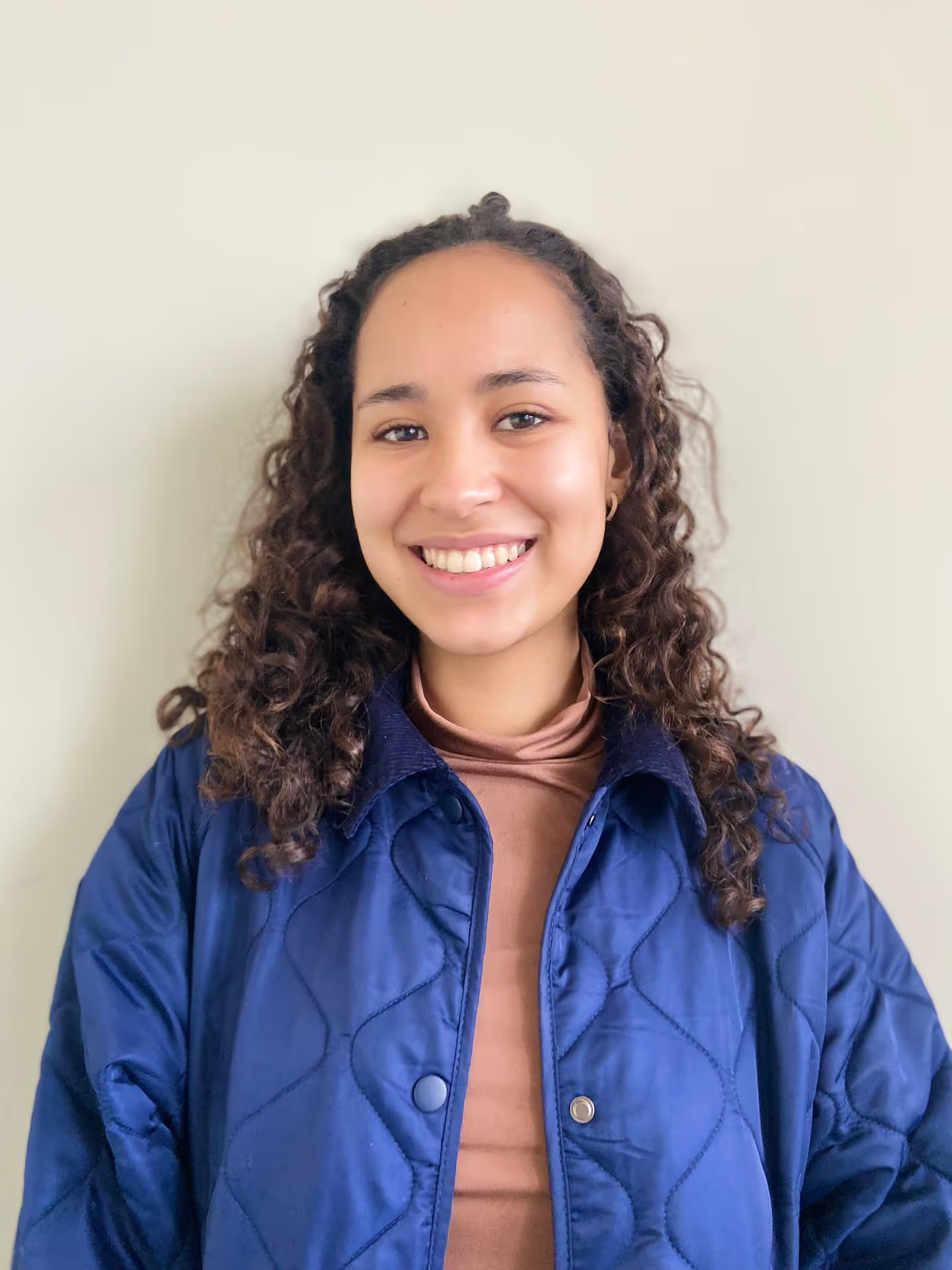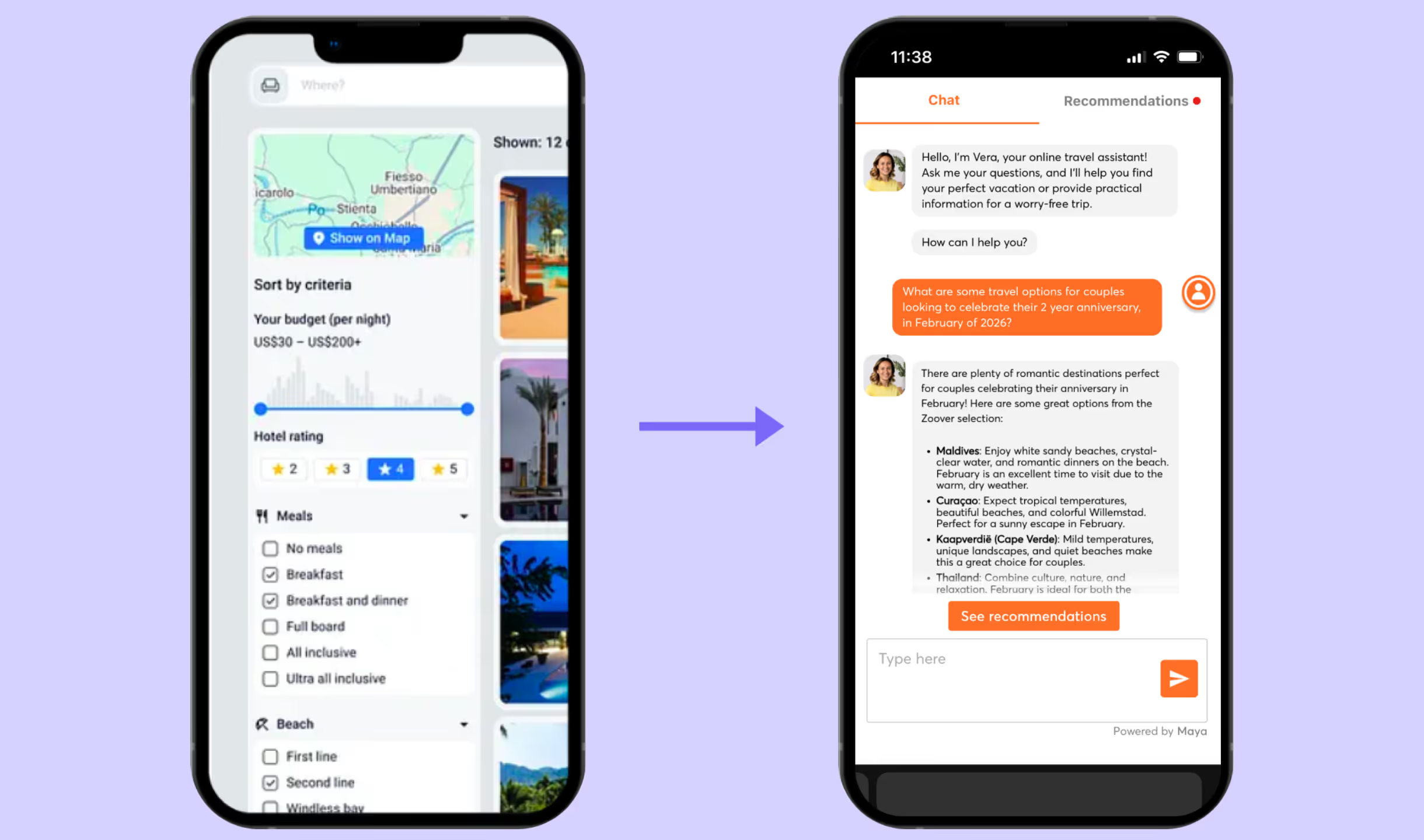How can OTA’s use Generative AI to drive conversion and streamline operations
For Online Travel Agencies (OTAs), competition is fierce—and travellers' expectations are higher than ever.

Table of content
For Online Travel Agencies (OTAs), competition is fierce—and travellers' expectations are higher than ever. The urgency to deliver fast, seamless, and tailored experiences has never been more pressing. But here's the good news: AI isn't the future anymore. It's a real tool that today's OTAs can use right away to streamline operations, increase conversions, and deliver the kind of customer experience that will keep travellers coming back.
So, how exactly can AI help you optimize your OTA?
Let’s explore the real-world opportunities many OTAs are missing, and how AI could bridge the gap.
1. Personalized Recommendations That Convert
Travel is not a one-size-fits-all proposition. A 5-star, 5-night vacation in the Maldives is not likely to be of interest to the same person booking a last-minute weekend party break in Berlin. And yet most OTAs continue to employ static search filters or "top-rated" lists, instead of seizing the opportunity to offer personalized recommendations that meet travelers where they are.
AI-powered recommendation engines can analyze search behaviour, booking history, demographics and seasonal patterns to surface the most relevant travel options in real time.
Imagine if your platform could…
- Suggest adventure tours the moment a user shows interest in related activities.
- Recommend not just a family-friendly hotel, but the right one! One that has activities for teenagers and still fits the parents preference for boutique, non-resort style accommodation.
- Provide proactive travel inspiration. Instead of just answering direct questions, your platform could guide users toward relevant offers.
This kind of relevance drives action. It removes decision fatigue and helps users move from browsing to booking. According to McKinsey, 71% of consumers now expect companies to deliver personalized interactions. By meeting this expectation of instant, tailored guidance, you create a frictionless experience that builds trust and loyalty.
Here's what your business gains:
- Higher booking conversion rates
- A competitive edge in the AI era
- Happier teams and loyal customers
2. Enhanced Search Bar
Today's travelers think in dreams, not keywords. Their needs are complex and emotional, like "a warm, cozy family beach holiday" but traditional search bars can't handle these natural requests.
This is why the rigid search box is being replaced by intelligent discovery engines that actually understand how people think about travel.
It Speaks Their Language
Imagine if your customers could simply describe what they want in plain English. The AI search bar acts like one of your best travel consultant, understanding "Romantic but not too touristy holiday" and instantly generating perfectly matched, bookable options.
What does this mean for you? Customers stay engaged instead of bouncing to competitors.
It Captures Their Inspiration
Leaders like Google have been paving the path for enhanced search bars, when a user uploads that stunning coastline photo, visual search identify the location and immediately shows bookable hotels and itineraries. That fleeting "I want to go there" moment becomes a concrete booking opportunity.
So, what's the real impact?
You're transforming your website from a passive catalog into an intelligent consultant that converts inspiration into revenue, from several points of interaction.
3. Conversational AI for 24/7 Support
One of the biggest pain points for travelers? Slow or confusing customer service, especially when booking across time zones or in international destinations.
A problem of the past, now that a new class of intelligent assistants have arrived. The revolution in generative AI means modern tools use Large Language Models (LLMs) to understand context and intent, allowing for natural, human-like conversations.
These systems are not static; they are self-learning partners that constantly update to stay current with your business data, automatically refreshing their knowledge from your website and other connected sources to provide the best possible response. Every interaction provides valuable business intelligence, offering strategic insights into what travelers are asking for and which destinations are popular, empowering you to act faster and smarter.
Example scenario:
A customer is looking at a hiking tour in the Alps late on a Sunday night. They are excited by the trip but have practical questions before they can commit. They ask, "How fit do I need to be for this tour, and what kind of gear do I absolutely need to bring?" Instead of an empty chat window or a form, your AI assistant instantly accesses the tour's detailed information. It clarifies the fitness level required (e.g., "moderate, for active walkers") and provides a specific packing list, distinguishing between mandatory and recommended items. The traveler gets an immediate, helpful answer that builds confidence and removes the final barriers to booking.
Your benefits:
- Reduced support workload by automating routine communication
- Customer response times reduced by as much as 90%.
- Higher trust and satisfaction from customers
4. Intelligent Automation Behind the Scenes
Optimizing a travel marketplace isn’t just about what the user sees, is also a matter of backend efficiency. AI can power smart automation in everything from supplier onboarding and content curation to fraud detection and review moderation.
Some examples include:
- Auto-tagging and categorizing tours based on natural language descriptions
- Identifying duplicate or outdated listings in your platforms
- Automating lead nurturing by drafting personalized follow-up emails and preparing custom itineraries based on a traveler's initial AI conversation.
- An AI can act as an internal copilot for your team, unlocking knowledge for junior employees that need to get onboarded
By letting AI handle the repetitive your team can focus on strategy, creativity, and growth.
5. Predictive Insights to Stay Ahead
What will your travelers be searching for next month? Which destinations are emerging? Where in the funnel am I losing customers?
AI doesn’t just respond to user actions—it predicts them. With the right implementation, you can identify emerging trends, drop-off points in your booking journey, and new revenue opportunities before they even happen.
For example:
- Identify an increase in interest in train travel across Europe and market relevant itineraries
- Identify repeat users who haven’t booked in 6 months and trigger re-engagement campaigns
- Spot patterns in abandoned carts and optimize your funnel accordingly
Final Thoughts: Why OTAs Can’t Afford to Wait
For OTAs that want to grow, expand margins, and stay competitive, simply having AI is the new minimum. The definitive competitive advantage comes from leveraging an advanced AI that unlocks unprecedented scale, speed, and smarter decisions, which is what will allow market leaders to dominate.
At Maya, we help travel businesses implement human-like automation that feels personal, not robotic. Whether it’s through conversational AI, smart recommendations, or intelligent backend systems, our platform is designed to make every part of your OTA work better.
Curious what that could look like for you?
Get in touch and let’s explore what’s possible.
New mobile apps to keep an eye on
Auctor purus, aliquet risus tincidunt erat nulla sed quam blandit mattis id gravida elementum, amet id libero nibh urna nisi sit sed. Velit enim at purus arcu sed ac. Viverra maecenas id netus euismod phasellus et tempus rutrum tellus nisi, amet porttitor facilisis aenean faucibus eu nec pellentesque id. Volutpat, pellentesque cursus sit at ut a imperdiet duis turpis duis ultrices gravida at aenean amet mattis sed aliquam augue nisl cras suscipit.
- Commodo scelerisque convallis placerat venenatis et enim ullamcorper eros.
- Proin cursus tellus iaculis arcu quam egestas enim volutpat suspendisse
- Sit enim porttitor vehicula consequat urna, eleifend tincidunt vulputate turpis
What new social media mobile apps are available in 2022?
At elit elementum consectetur interdum venenatis et id vestibulum id imperdiet elit urna sed vulputate bibendum aliquam. Tristique lectus tellus amet, mauris lorem venenatis vulputate morbi condimentum felis et lobortis urna amet odio leo tincidunt semper sed bibendum metus, malesuada scelerisque laoreet risus duis.

Use new social media apps as marketing funnels
Ullamcorper pellentesque a ultrices maecenas fermentum neque eget. Habitant cum esat ornare sed. Tristique semper est diam mattis elit. Viverra adipiscing vulputate nibh neque at. Adipiscing tempus id sed arcu accumsan ullamcorper dignissim pulvinar ullamcorper urna, habitasse. Lectus scelerisque euismod risus tristique nullam elementum diam libero sit sed diam rhoncus, accumsan proin amet eu nunc vel turpis eu orci sit fames.
- Eget velit tristique magna convallis orci pellentesque amet non aenean diam
- Duis vitae a cras morbi volutpat et nunc at accumsan ullamcorper enim
- Neque, amet urna lacus tempor, dolor lorem pulvinar quis lacus adipiscing
- Cursus aliquam pharetra amet vehicula elit lectus vivamus orci morbi sollicitudin
“Sit enim porttitor vehicula consequat urna, eleifend tincidunt vulputate turpis, dignissim pulvinar ullamcorper”
Try out Twitter Spaces or Clubhouse on iPhone
Nisi in sem ipsum fermentum massa quisque cursus risus sociis sit massa suspendisse. Neque vulputate sed purus, dui sit diam praesent ullamcorper at in non dignissim iaculis velit nibh eu vitae. Bibendum euismod ipsum euismod urna vestibulum ut ligula. In faucibus egestas dui integer tempor feugiat lorem venenatis sollicitudin quis ultrices cras feugiat iaculis eget.
Try out Twitter Spaces or Clubhouse on iPhone
Id ac imperdiet est eget justo viverra nunc faucibus tempus tempus porttitor commodo sodales sed tellus eu donec enim. Lectus eu viverra ullamcorper ultricies et lacinia nisl ut at aliquet lacus blandit dui arcu at in id amet orci egestas commodo sagittis in. Vel risus magna nibh elementum pellentesque feugiat netus sit donec tellus nunc gravida feugiat nullam dignissim rutrum lacus felis morbi nisi interdum tincidunt. Vestibulum pellentesque cursus magna pulvinar est at quis nisi nam et sed in hac quis vulputate vitae in et sit. Interdum etiam nulla lorem lorem feugiat cursus etiam massa facilisi ut.












.svg)